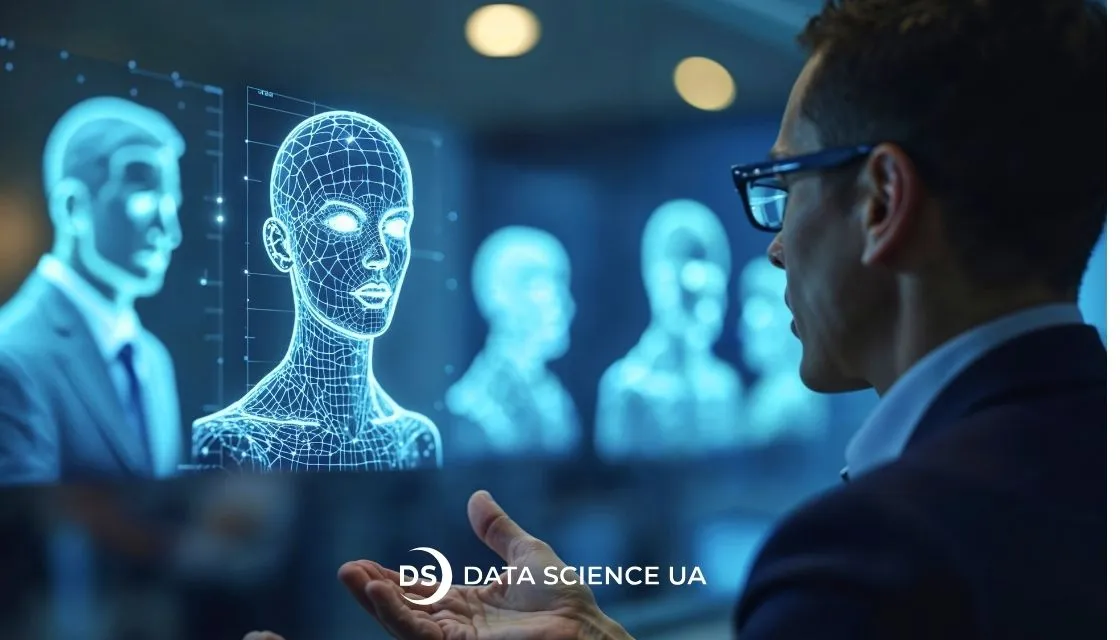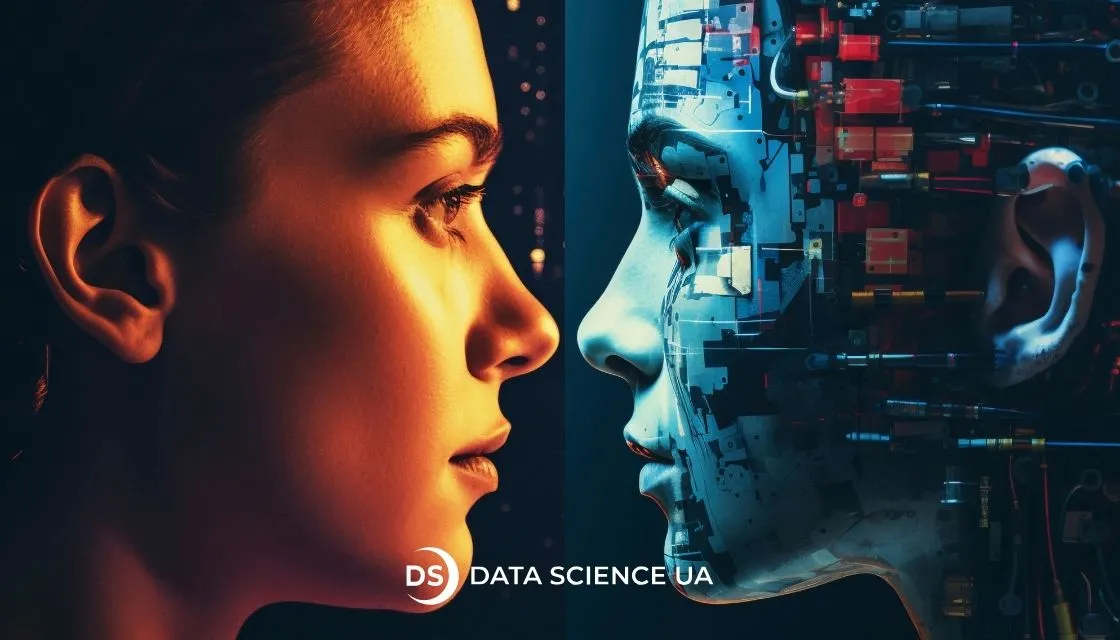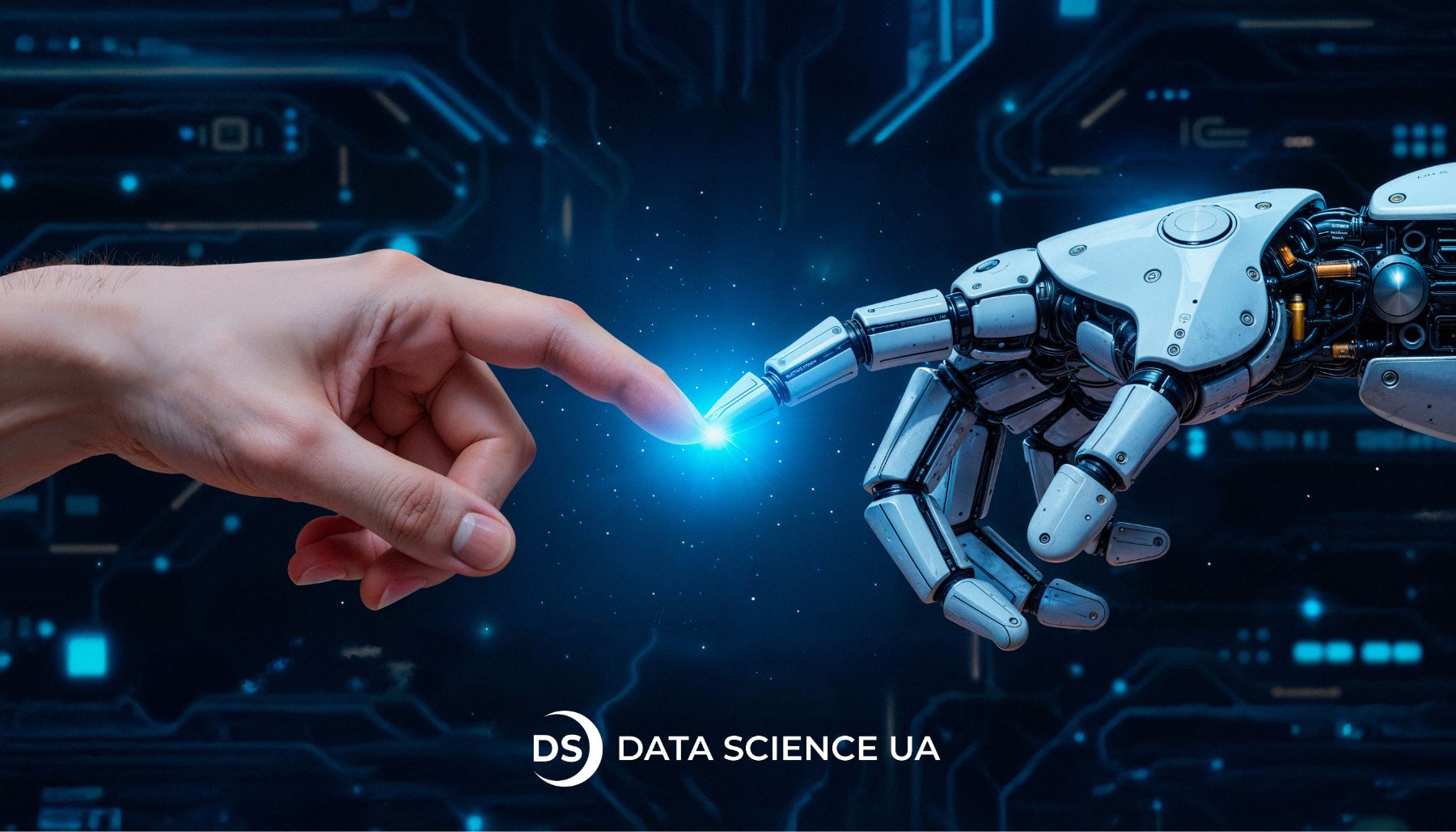How can we use AI for photography?
Photography for a long time remained an area where physical and optical improvements were the way to go. And they were undoubtedly more important than computational advances. The quality of lenses, matrices, focusing, and other options far from AI set the field as a whole. However, there already is a high chance a random photo you see on Instagram right now is the product of AI.
And most importantly, for many photos, you will have no idea whether it passed through the algorithms of AI or not. Artificial intelligence found its way into various stages of photography. It can help the camera correctly arrange the parameters for the photo capture. AI can also suggest the likely best changes in the graphic editor. AI can even make a night photo look like the author took it during the day. All the changes are needed to meet the expectations for a beautiful photo from a human perspective, but AI is a worthy competitor for this challenge.
So, how did it come to this, and why does AI become a force to contend within photography? This article will shed light on the world of contemporary artificial intelligence photography. It will also give some examples of how it has entered the mainstream market and may be closer than you expect. AI development challenges and how AI can enable a sustainable future are important aspects to consider when exploring the potential of artificial intelligence in various industries, including photography.
Why Use AI in Photography?
One thing about photography has been constant through all the centuries of its development. It was true even in the long-gone times when paints and easels were the best way to take a picture of life. This thing is the desire to capture an image as well as good-looking as possible. The exact depth of what this entails”good-looking” changed from era to era and even from person to person. But if the technology to create better or more lifelike images appeared, it quickly found applications.
When the possibility to create photos of very intricate quality became a widely known fact, another desire became prominent – to create such a photo quickly, without any settings, and make it still look as good as before. Let’s say you want to capture the beautiful scenery just as it looks this instant, or take a group picture of friends at the right moment. In limited time the photo capture technicalities are likely to be just an unwanted distraction.
The appearance of auto-settings features on digital cameras was a most noticeable result of such a demand. They were one of the starting mainstream trends leading to a new field, computational photography, driven by artificial intelligence in science.
The main goal of computational photography is to create a photo with algorithms not available for the device’s optical hardware. And its development had only begun at that time. With devices themselves becoming more and more accessible, so did quality photography. The machines managed to keep up with the demand until a new player entered the field: cameras on mobile phones.
From a Mobile Phone Camera to AI
Phone cameras were not the main focus of manufacturers in any way. First, they were almost a marketing feature. The hardware included in them had to be compact and light to fit the measurements of a device. So first, the quality was not high enough to capture a vital text you wanted to save.
But phones became something that almost any person had all the time, so mobile cameras happened to always be in hand reach. Let’s suppose, you want to take a photo of something you see on the street. The phone camera is the only one you have. And you better hope the quality is recognizable and the light is enough to see something on it.
A good phone camera became a necessity and a competitive advantage. However, the amount of space in a mobile phone is exceptionally tiny. Manufacturers could do only so much within it. They could not fit technologies close to SLR cameras, and demands grew higher and higher.
These conditions called for new developments in computational photography, addressing the machine learning problem meaning the limitations of hardware within mobile devices. The main idea was to substitute the physical features not present in less sophisticated cameras. The actions started with simple automatic white field correction and eventually led to more complex algorithms and AI.
And What Does AI in Photography Mean Today?
It is not an accident that AI in photography is the most in use where the camera hardware is not the main focus. AI’s computational capacity has the most significant aim to substitute high-end optical features. The tasks that AI currently cover in these directions are performing the parameter choice, righting the image’s lighting level, or segmenting it for the different settings.
However, it now went even further. AI is eliminating another time-consuming photography chore – photo editing. These actions aim to make a photo look as if it has passed through the hands of an experienced visual editor. Many techniques make parts of the image more appealing by changing parameters according to properties. But AI also made a profit from image recognition software development services.
More advanced options include background changes, removing undesired objects, enhancing the photo with the knowledge of what exactly is present, and others. Some algorithms can even use facial recognition to improve the images, almost predicting how a person should look like. In the following chapters, we will glance at these technologies more closely.
Most Artificial intelligence in photography aims to make images as good-looking as possible to the human eye and do it with a simple click. Everyone once in a while wanted to capture the beautiful scenery just as it looks in a moment while not caring for settings, right? This scenario is where AI photography is at its best.
AI in Image Stacking
The most prominent feature of digital photography is quickly making several successive shoots. And AI uses it to its full advantage. Each shot can have completely different settings, chosen either by AI or other rules. And every slightly different image will have additional information about the scenery.
There can be lighter photos, darker photos, and less and more in focus, with different moving objects in time. AI can make full use of them, combining and changing them to create the best-looking combined picture. There is an extensive amount of parameters differing from photo to photo, but the most important are exposure, time, and focus.
Image stacking is the same AI technology most featured in cameras right now. So let’s have a more detailed look.
Artificial Intelligence and HDR
HDR or high dynamic range photography is one of the most candid photos features overall. The development of HDR as a technology happened before AI became a player in the field. However, AI started to be used to optimize and enhance algorithms.
Technology-wise, HDR makes use of image stacking by exposure. Even from the most sophisticated hardware setup, the single-camera image cannot capture all the tonal changes in a scene. It can only approximate them. The camera can make several consecutive images with varying exposures to compensate for this fact. In classical realizations, the aperture and shutter speed physically determine the amount of exposure. The algorithm then combines a single image with realistic lighting levels and details from the received number of photos. Or photography AI does, in this case.
In most classical cases, the camera takes several underexposed and overexposed images. Then, the regions with the best look in either of them create the resulting composite picture. As a general rule, the dark areas come from overexposed images, and vice versa.
The main challenge is to correctly differentiate such regions and to what extent the composite should use them. These tasks are the main ones that the AI tries to solve. It determines the needed values for exposure, the zones for their use, and how much each exposure influences such regions.
Sometimes, these algorithms combine with several other semantic image segmentation services or recognition tasks. For example, the AI can determine a face on the photo and give it some face-specific brightness correction.
AI HDR became especially useful for smartphone cameras similar to other AI-powered techniques. Various manufacturers have developed several industrial Artificial intelligence HDR systems under different names. In general, their focus is on making the process smoother than ever. The steps usually include making as few different-exposure photos as possible and generating the fastest result. The best examples of this trend are Huawei’s HDR+ technology. In turn, other companies try to focus on combining as many settings as possible with ten or more photos.
The important point is that the level of light human sight captures is not uniform essentially. The sighting mechanism does a good job of adapting to different brightness in view, and we do not see the world as a single unmoving image. Therefore, it is a much more difficult task to build a realistically bright photo from only one shot, even for AI. However, the experiments with single-photo setups continue.
Artificial Intelligence and Night Photos
Traditionally, the night photos made with regular phone cameras had one big problem – they were dark. And if they weren’t dark, they were either blurry or had unnatural colors. As phones were still within a hand’s reach for many people at night, the quality of night photos was a concerning issue.
The difference between night and daytime photography is the low amounts of light are just not enough to try many settings. The slight increases in exposure still catch little light. More significant increases result in blurry photos with mentioned unnatural colors. As a result, they are inconvenient to make.
One of the solutions to the night issue was the development of image stacking to change, not the parameters, but the time of the photo. The camera takes a quick series of successive images. Each of them will contain a portion of light, with slightly different qualities of depicted objects. Then, an algorithm similar to HDR will combine them in a single image, only this time amplifying the properties with other shots.
The biggest issue with this raw algorithm is the color distortion. As light captured at different times is combined, the overall range can move towards one of the colors. Yellow-intense night photos were a well-known phenomenon even before AI. Thus, color correction is another crucial task for AI in this case. It also needs to set the correct white balance for the image. The combined results use as much light from the image as possible and show objects in natural colors, thus creating a realistic night image.
The pioneer of nocturnal photography was Google Night Sight, which started the entire region. Apart from the mentioned algorithms, Google includes several other AI-controlled features. For example, they address the issue of catching the movement without blur. The further a new shot is from the previous, the lower is its usability in stacking. Night Sight will spend less time gathering the photos for an algorithm if the scene moves.
There are inbuilt methods to prevent the movement itself as well. These developments are part of the bigger picture, where AI is used to stabilize images or videos from any action.
Artificial Intelligence and Image Stabilization
Image stabilization first came into view with no connection to night vision technologies. Two primary situations where some motion affected the quality were the long-exposure shots and videos. Both hand tremors and object movements caused changes in the frame, but the solutions were mostly the same.
The oldest and still usable technology is Optical image stabilization (OIS). It is present in various hardware lines, from professional DSLR cameras to modern smartphones. In this case, the movements of the capturing mechanism negate the picture’s movements. The receiving matrix shifts by a pixel and values computations for each point, combining their results. In mobile phones, the hardware could not be deeply sophisticated, so its quality was lower from the very beginning.
Then, electronic image stabilization appeared as an option. Its furthest development is AI self-stabilization (AIS). In core, it also operates with a magnitude of photos. AI selects one of them as a base image. Then it aligns the other shots with it, so the movement is compensated.
In the case of video capturing, the base frame changes with modeling the hand movement. The algorithm aligns the successive frames with previous ones by determining their correct locations and values. The resulting images or frames show objects as entirely static.
The stabilization technology can also work in reverse. In Google’s recent Motion Mode feature for their Pixel series, image stacking is used to recreate the motion itself. After taking several frames, the algorithm determines the moving objects. It then aligns the stabilized images and adds blur to the segments according to the vector captured in intermediate frames.
Artificial intelligence is in use for stabilization in many modern smartphones. The manufacturers using it include Samsung and Huawei.
Artificial Intelligence and Zoom
The other significant development caused by stabilization technology is high-quality zooming. The causes of blurry and noisy images on high zoom values were primarily handshaking and lack of resolution. We can account for both of these factors with multi-shot stabilization.
One of the most complex created features for zooming is Google’s Super Res Zoom. The amount of developed algorithms also shows how complicated this task is. Several low-resolution images taken in different positions are combined to receive an optical zoom equivalent.
For this purpose, shaking hands are even beneficial – the frames come from slightly different positions as a result. Then the images are stabilized to be only a few points apart and combined to create a much more detailed single frame. The OIS module awakens if the camera doesn’t move and generates shots with different pixel positions.
There are also algorithms to counter image aliasing and noise removal. Algorithms have based on the details from different frames and use edge detection and feature alignment.
Super-zoom became a widely used feature in smartphones. The image-stacking AI technologies allow for such zoom values that the photos even have accusations of being fake. Smartphones, however, weren’t the first in zooming into the night sky with burst technologies. A similar method of enhancement was known earlier in astronomy.
Methods in Development and Other Features
Mainstream artificial intelligence applications in photography go much beyond the mentioned methods. So far, many other applications show themselves only in one or two features developed by different manufacturers. Others only yet exist as potential uses still in research. For example, AI can stack images in many other ways. It can unite multiple different-focus pictures into a single high-resolution one.
More effective image denoising can use AI combined with more classical algorithms, such as bilateral filters. The area of low-light imaging is also in rapid development. One of the leading research directions is restoring older photos taken at night with low brightness. Such methods require reconstructing the image from a single frame. In the future, they can optimize the existing night vision algorithms. Other algorithms focus on enhancing the image quality without stacking.
The AI bokeh effect is the technology that found its way into both smartphones and photo editing software. It is sometimes part of a “portrait mode” and uses segmenting technologies. The person or object in front remains focused, while the determined background gains a blur. The bokeh feature is present in many current phones, either with help from AI or not.
Another promising technology is AI-driven flash. The right brightness level is crucial for some photos, and just the right amount of sparkle can make the scene more natural. Possible methods include calculating the right distance to object, angle, and amount of light. Industrial applications from Canon are already on the market as a standalone product. In the future, technology may find its way into phones as well.
Unique Applications
AI in photography has also found some unique applications as of now. Many technologies belong to Google’s team developing Google Pixel imaging technologies.
One of such technologies is face unblur, which aims to make faces on the image look sharper. The FaceSSD model detects faces in the camera when it is turned on and applies the combinations of image stacking. Images can also be from the same time but different cameras. The combined image is then processed again with further blur removal. Deblur of pet faces is one of the following model’s goals.
The Real Tone feature helps determine the correct shade of a person’s skin, displaying its features as precisely as possible. The image stacking is in use here, offering the natural skin tone.
As another development of a segmentation algorithm, Google offers an option of Magic Eraser. The users can themselves select the objects they want to remove from the picture, and the AI will do the segmenting itself. The feature aims to remove the photobombs or unwanted objects from the view.
Conclusions
Artificial intelligence steadily became the technology propelling the world of mainstream photography. It has already found a natural place in existing technologies. Regular users can not even realize that AI tech has improved their photos.
The driving force behind AI development services was the spread of mobile phones. The camera that each person has in their pocket became a reality, and their wish to improve the quality led to an entirely new field. Now manufacturers can improve the photo quality with a simple software update.
AI essentially makes high-quality photography available for everyone in every situation. It needs no expensive equipment or lengthy preparation. And as an actively developed area, it is likely only to continue becoming more precise and accessible. AI in photography makes sure we use our hardware to its full extent.





